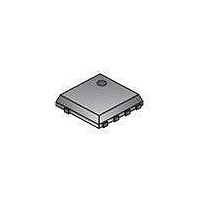NCT1008CMT3R2G ON Semiconductor, NCT1008CMT3R2G Datasheet - Page 16

NCT1008CMT3R2G
Manufacturer Part Number
NCT1008CMT3R2G
Description
TMP DIO MON/SMBUS 4CH UDFN
Manufacturer
ON Semiconductor
Datasheet
1.NCT1008CMT3R2G.pdf
(20 pages)
Specifications of NCT1008CMT3R2G
Function
Temp Monitoring System (Sensor)
Topology
ADC (Sigma Delta), Comparator, Multiplexer, Register Bank
Sensor Type
External & Internal
Sensing Temperature
0°C ~ 127°C, -64°C ~ 191°C
Output Type
I²C™/SMBus™
Output Alarm
Yes
Output Fan
Yes
Voltage - Supply
2.8 V ~ 3.6 V
Operating Temperature
-40°C ~ 125°C
Mounting Type
Surface Mount
Package / Case
8-WFDFN Exposed Pad
Output Voltage
3.6 V
Output Current
240 uA
Input / Supply Voltage (max)
+ 3.6 V
Input / Supply Voltage (min)
- 0.3 V
Maximum Operating Temperature
+ 150 C
Mounting Style
SMD/SMT
Maximum Power Dissipation
4.5 W
Minimum Operating Temperature
- 55 C
Operating Temperature Range
- 55 C to + 150 C
Supply Current
350 uA
Lead Free Status / RoHS Status
Lead free / RoHS Compliant
Available stocks
Company
Part Number
Manufacturer
Quantity
Price
Company:
Part Number:
NCT1008CMT3R2G
Manufacturer:
ON Semiconductor
Quantity:
950
Part Number:
NCT1008CMT3R2G
Manufacturer:
ON/安森美
Quantity:
20 000
•
•
•
•
cause THERM and THERM2 to operate as described.
Application Information
Noise Filtering
the industry standard practice was to place a capacitor across
the D+ and D− pins to help combat the effects of noise.
However, large capacitances affect the accuracy of the
temperature measurement, leading to a recommended
maximum capacitor value of 1,000 pF. Although this
capacitor reduces the noise, it does not eliminate it, making
it difficult to use the sensor in a very noisy environment.
when it comes to eliminating the effects of noise on the
external sensor. The series resistance cancellation feature
allows a filter to be constructed between the external
temperature sensor and the part. The effect of any filter
resistance seen in series with the remote sensor is
automatically cancelled from the temperature result.
remote temperature sensor to operate in noisy environments.
Figure 21 shows a low−pass R−C−R filter, where R = 100 W
and C = 1 nF. This filtering reduces both common−mode and
differential noise.
TEMPERATURE
Both the external and internal temperature measurements
For temperature sensors operating in noisy environments,
The NCT1008 has a major advantage over other devices
The construction of a filter allows the NCT1008 and the
When the THERM2 limit is exceeded, the THERM2
signal asserts low.
If the temperature continues to increase and exceeds the
THERM limit, the THERM output asserts low.
The THERM output deasserts (goes high) when the
temperature falls to THERM limit minus hysteresis. In
Figure 20, there is no hysteresis value shown.
As the system cools further, and the temperature falls
below the THERM2 limit, the THERM2 signal resets.
Again, no hysteresis value is shown for THERM2.
THERM2
THERM
Figure 20. Operation of the THERM and THERM2
905C
805C
705C
605C
505C
405C
305C
Figure 21. Filter Between Remote Sensor and
NCT1008 Factors Affecting Diode Accuracy
TEMPERATURE
1
REMOTE
SENSOR
2
Interrupts
3
100W
100W
4
1nF
THERM LIMIT
THERM2 LIMIT
D+
D–
http://onsemi.com
16
Remote Sensing Diode
transistors built into processors or with discrete transistors.
Substrate transistors are generally PNP types with the
collector connected to the substrate. Discrete types are either
PNP or NPN transistors connected as diodes (base−shorted
to collector). If an NPN transistor is used, the collector and
base are connected to D+ and the emitter to D−. If a PNP
transistor is used, the collector and base are connected to D−
and the emitter to D+.
discrete transistors, consider several factors:
•
•
accuracy is obtained by choosing devices according to the
following criteria:
•
•
•
•
in SOT−23 packages are suitable devices to use.
Thermal Inertia and Self−Heating
sensing diode and/or the internal temperature sensor being
at the same temperature as that being measured. Many
factors can affect this. Ideally, place the sensor in good
thermal contact with the part of the system being measured.
If it is not, the thermal inertia caused by the sensor’s mass
The NCT1008 is designed to work with substrate
To reduce the error due to variations in both substrate and
If a discrete transistor is used with the NCT1008, the best
Transistors, such as the 2N3904, 2N3906, or equivalents
Accuracy depends on the temperature of the remote
The ideality factor, nF, of the transistor is a measure of
the deviation of the thermal diode from ideal behavior.
The NCT1008 is trimmed for an nF value of 1.008. The
following equation may be used to calculate the error
introduced at a temperature, T (°C), when using a
transistor whose nF does not equal 1.008. Consult the
processor data sheet for the nF values.
Some CPU manufacturers specify the high and low
current levels of the substrate transistors. The high
current level of the NCT1008, I
low level current, I
current levels do not match the current levels specified
by the CPU manufacturer, it may become necessary to
remove an offset. The CPU data sheet should advise
whether this offset needs to be removed and how to
calculate it. This offset is programmed to the offset
register. It is important to note that if more than one
offset must be considered, the algebraic sum of these
offsets must be programmed to the offset register.
Base−emitter voltage greater than 0.25 V at 6 mA, at the
highest operating temperature
Base−emitter voltage less than 0.95 V at 100 mA, at the
lowest operating temperature
Base resistance less than 100 W
Small variation in h
control of V
To factor this in, the user writes the DT value to the offset
register. It is then automatically added to, or subtracted
from, the temperature measurement.
DT = (nF − 1.008)/1.008 x (273.15 Kelvin + T)
BE
characteristics
LOW
FE
(50 to 150) that indicates tight
, is 13.5 mA. If the NCT1008
HIGH
, is 220 mA and the











